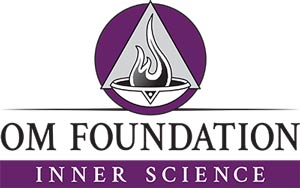When OM C. Parkin founded Gut Saunstorf Monastery many years ago, it was quite natural that dark rooms would have a place here, as he was aware of the healing and transformative potential of a darkness retreat.
For guests, a darkness retreat is a very special opportunity to stay at the monastery. The two dark rooms are available to people who wish to come into deeper contact with themselves by spending a certain amount of time in complete seclusion from external sensory impressions.
This form of retreat has a long spiritual tradition. For thousands of years, it has been used in many cultures to deepen insights beyond the distractions of daily life, to penetrate into inner layers of the self and to experience stillness.
From darkness to light
“We all come from darkness and return to darkness, darkness is the mother of all being. She is the original womb, she has depth and a tremendous power to nourish. She embraces the embryo in the womb and the seed in the earth. The bright day tires and the dark night regenerates.”
This is how the Indian mystic Osho described darkness in the introduction to his “Darkness Meditation”, which takes place in a completely lightless room. Darkness is the infinite, creative space in which everything has its origin, even light.
In the Book of Genesis it is written:
In the beginning God created the heavens and the earth. Now the earth was formless and empty, darkness was over the surface of the deep, and the Spirit of God was hovering over the waters. And God said, “Let there be light,” and there was light. God saw that the light was good, and he separated the light from the darkness. God called the light “day,” and the darkness he called “night.”
The light appears in the darkness. And this is not only the case in the outer world, but also in the inner world. The mystics speak of the dark night of the soul that they had to go through before they experienced the light of enlightenment and union with God. Darkness obviously not only has a feminine, maternal, nurturing quality, but also a threatening, “dark” side. This can already be heard in the words of the biblical text where the emphasis is on the creation of light: And God saw that the light was good and separated the light from the darkness. In the following age of Christian patriarchy, this separation became massive and took on serious significance. Light and darkness or gloom separated into an irreconcilable opposition of good and evil.
From now on, everything sinful, evil and threatening lurked in the darkness. According to Christian doctrine, God dwells in the light, on the outside, up in heaven. A person who has been moulded by Christianity strives upwards, towards Him, towards the light, which for him or her represents not only God, but also life. This person avoids the darkness, which is associated with death and which contains everything that has been suppressed, which people consider to be evil and which they fear. They fear the depths, where they localise hell and the devil, and they fear death, which may mean eternal condemnation.
The Christian mystics, however, knew that they had to take a different path to reach God, that the path to the light leads inwards through the darkness. Every mystic, regardless of tradition, knows that God, as the source of everything, is both light and darkness.
But tragically, almost all of us choose the path to the outside in order to reach the light. After the light had lost its close connection to God for the majority of people during the Enlightenment period and was now only attributed to the mind, the path led increasingly to externalisation, to the superficiality of the visible world perceived by the eyes.
Returning to the darkness
In all spiritual traditions, as they emerged from the work of great mystics, techniques are used to limit or even eliminate the distractions of the outer world for the seeker on the inner path in order to lead him from the surface into the depths.
In many traditions, caves or completely darkened rooms have been used for this purpose since ancient times. There are frequent reports of sages who withdrew into caves to fast and meditate. The encounter with darkness also plays a major role in the initiation rites of primitive peoples and is part of shamanic practices. In the Buddhist tradition, especially the Tibetan tradition, the retreat into darkness is an important element of higher levels of monk training and lasts not just hours or days, but weeks, months and in special cases even years.
Also in the present day, the techniques of dark meditation and darkness retreat continue to be used by teachers of many traditions and they are increasingly spreading outside the strict framework of spiritual training.
Experiences in the darkness – heaven and hell
A few years ago, I myself spent nine days in a darkness retreat at Gut Saunstorf. Completely isolated from the outside world, I only had contact with my companion, who spoke to me once a day about my experiences. Many of the people who have used these rooms in the same way as me have written a short report about their inner experiences during their stay in the darkness, and many of these reports show a similar range of experiences despite the very different individual content.
At the beginning of the retreat, there was often great tiredness and an extreme need for sleep as a physical reaction to the light-deprivation, in conjunction with a lack of sleep and the tension of everyday life, which greatly subsided after the first few days. Many reported a subsequent wakefulness and clarity of consciousness, a feeling of deep relaxation, which some perceived as falling into the depths of themselves. For me, however, this immense relaxation and relief that I felt in the darkness also showed me how highly my attention is usually focused on an external world that I perceive as latently threatening.
Almost always, “lucid” dreams occurred in the darkness, which were closely related to the dreamer’s inner situation, and gave them valuable clues. Often, these led to deep realisations about the nature and workings of their own mind, about the mechanisms that separated them from their true nature, which they felt closer to in the darkness.
As the retreat progressed, the coordinates of time and space, on which our outer life is based, increasingly dissolved in favour of an inner space and a kind of inner rhythm. Life slowed down more and more. The disorientation that initially occurred in the dark due to the loss of sight diminished with time, because the inner perception, a kind of inner vision, grew progressively stronger. The sense of hearing also seemed to begin to turn more inwards. Like another woman, I sometimes heard a soft inner melody. Not spectacular, or of unearthly beauty – no “music of the spheres” – but still too melodic to be mistaken for tinnitus.
The daily human contact with the retreat companion was felt particularly intensely by everyone on the retreat. Like others, I noticed a much stronger ability to concentrate and, like them, I was surprised at how diverse and not just dark darkness can be. Sometimes it seemed to me to be deep black, then again very light and at times I “saw” how darkness and light interpenetrated each other in many different ways. One man reported the following experience of light in the darkness:
After breakfast, I dedicate myself to my research question: What remains when the outer life recedes? What is an inner life?
See the abundance of outer life, how full my outer life is, but also that it is only a thin layer. A very thin layer. And how hollow the outer life is for me without an inner life.
But I also realise that inner life is very simple and sparse in a way.
Nothing but stillness.
I don’t want that. I don’t want this inner life. I am looking for a way out, for a possibility for an outer life, but I have to realise that there is no alternative. That I cannot avoid the realisation that an outer life will not be fulfilling for me without an inner life. At that moment, there is an intense flash of light. A ray of light from top to bottom. Like in paintings. I am very impressed and everything dissolves.
In the completely protected, nurturing and accompanied setting of a darkness retreat, people are exposed solely to their own inner fears and are forced to confront them due to a lack of escape options, which also means confronting death. They can, of course, ask their companion for support and, if necessary, end the retreat at any time. The door of the dark room is never locked. In fact, however, it was extremely rare that it was broken off, although almost all darkroom residents reached their limits at some point. Resistance, guilt, shame, pain, agony, boredom, tedium, childlike abandonment and forlornness, fear of death, fear of eternal damnation or of nothingness emerged from the depths of their minds to be seen and felt.
The following extract from a retreat report demonstrates this:
The blackness, the complete immobility and the total deprivation of external light nailed me down. There was one major situation in which I was overcome by a panic attack. The pain was very intense, I thought I couldn’t breathe and that I couldn’t bear this nothingness, this emptiness, this lack of light for even a moment longer. The doer in me appeared on the scene and wanted to stop everything. I called you (the teacher) inwardly for help and you said: “Don’t act, just witness.” That was a turning point that felt awful, but it was the beginning of a surrender. Witnessing brought me to a great sobriety which burst the panic bubble of thoughts and emotions. The panic was triggered by a scarcity thought: “I’m not getting something I absolutely need to survive.” I can see that this is exactly how my mind works. The basis is panic, followed by blind action without real thinking and feeling, but with substitute thinking and substitute emotions. From then on, a sense of detachment and serenity developed in me and I was able to perceive the emptiness as my home and the expanse of my heart without stories.
All the people I know personally or through their reports who used the dark room as a “laboratory” for their inner exploration found their time in the dark room to be extraordinarily enriching and deepening for their inner path, no matter how frightening, painful and sometimes unbearable their experiences seemed to them. Many had the feeling that during this time they were deeply healed in the sense of reconnecting with themselves and with the divine and expressed great gratitude and the need for a further and preferably longer stay. The outer darkness seems to illuminate the innermost, and the outer blindness seems to strengthen the inner vision, as it is also expressed by the archetype of the “blind seer”.
(abridged text)


